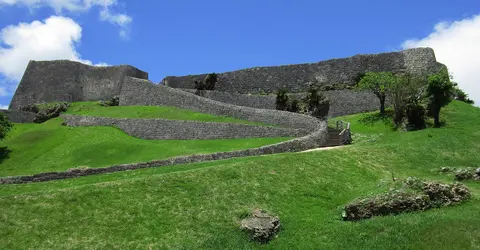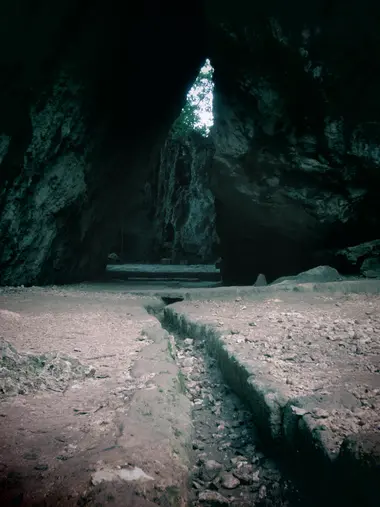UNESCO sites in Okinawa 沖縄の世界遺産
- Published on : 25/01/2018
- by : M.H.
- Youtube

Shuri Castle
Shun Oi
The heritage of the Ryukyu Kingdom
Okinawa is already popular for its incredible scenery and white sand beaches. Discover the nine places of the former kingdom of Ryukyu listed as World Heritage Sites.
The remains of a great kingdom
From the 14th to the 18th centuries, the Kingdom of Ryukyu ruled the Okinawa archipelago until its annexation by Japan in 1879. Inspired by the various Asian civilizations through trade he had with them, the kingdom has built his culture and his own beliefs. You will be able to trace its history in the landscape of Japan's southernmost prefecture by visiting the nine UNESCO World Heritage sites since the year 2000.
The five castles
In the capital of Okinawa, Naha, you will find Shuri Castle on a hill at 120 meters above sea level. It was the main residence of the famous Ryukyu kingdom. Damaged many times throughout its history, it was renovated in 1992, restored in accordance with the archaeological discoveries made in the region. You will be able to stroll in the park, admire the brand new castle but also the walls of the gusuku (fortress), only survivors of the fire having consumed a large part of the castle during the Second world war. These are the structures listed on the World Heritage Site List.

Katsuren castle ruins
Deepen your knowledge on the history of the kingdom by visiting the ruins of the other castles, noticed by UNESCO. The sites of Zakimi, Katsuren and Nakagusuku castles are all must-see when in the center of Okinawa, and finally Nakijin is on the way between Churaumi Aquarium and the Kouri Bridge, two must-see destinations in the north of the island.
The stone in the spotlight
Built in 1501 during the golden age of Ryukyu's kingdom, the Royal Tamaudun Mausoleum is inspired by Shuri Castle, near which it was erected, and houses the bones of the rulers of the second Sho dynasty (1470-1879). In all, there are 18 kings, accompanied by their wives and their children, who are buried in this impressive structure restored in the second half of the 20th century.

It's in Shuri Castle Park that you will find the Sonohyan-utaki stone gate, built in 1519. Also a World Heritage Site, this limestone gate served as a place of worship for the royal family. Like a large part of the castle, it was restored after the war of 1939-1945 and today, it is travelers and locals who come to visit.
Sacred Landscapes
At the end of the 18th century, the Royal Garden Shikinaen served to amuse the Chinese diplomatic envoys when they visited, in addition to being the second home of the royal family. It is located in Naha, not far from Shuri Castle, and you can enjoy the unique Ryukyu style, a subtle mix of Chinese and Japanese architecture and landscapes. Cross the bridge, admire the hexagonal pavilion and stroll through the charming forest garden of Shikinaen.
See also: Parks and gardens in Japan

Finally, the most sacred place in Ryukyu's kingdom is undoubtedly Seifa-utaki shrine, southeast of the main island. It was once where religious rites were carried out in the 15th and 16th centuries, but rock formations and caves are all that remain there now. You can admire them, overlooking the sea, and finish your journey of the "Sites of Gusuku and Associated Properties of the Kingdom of Ryukyu".
For further :
















